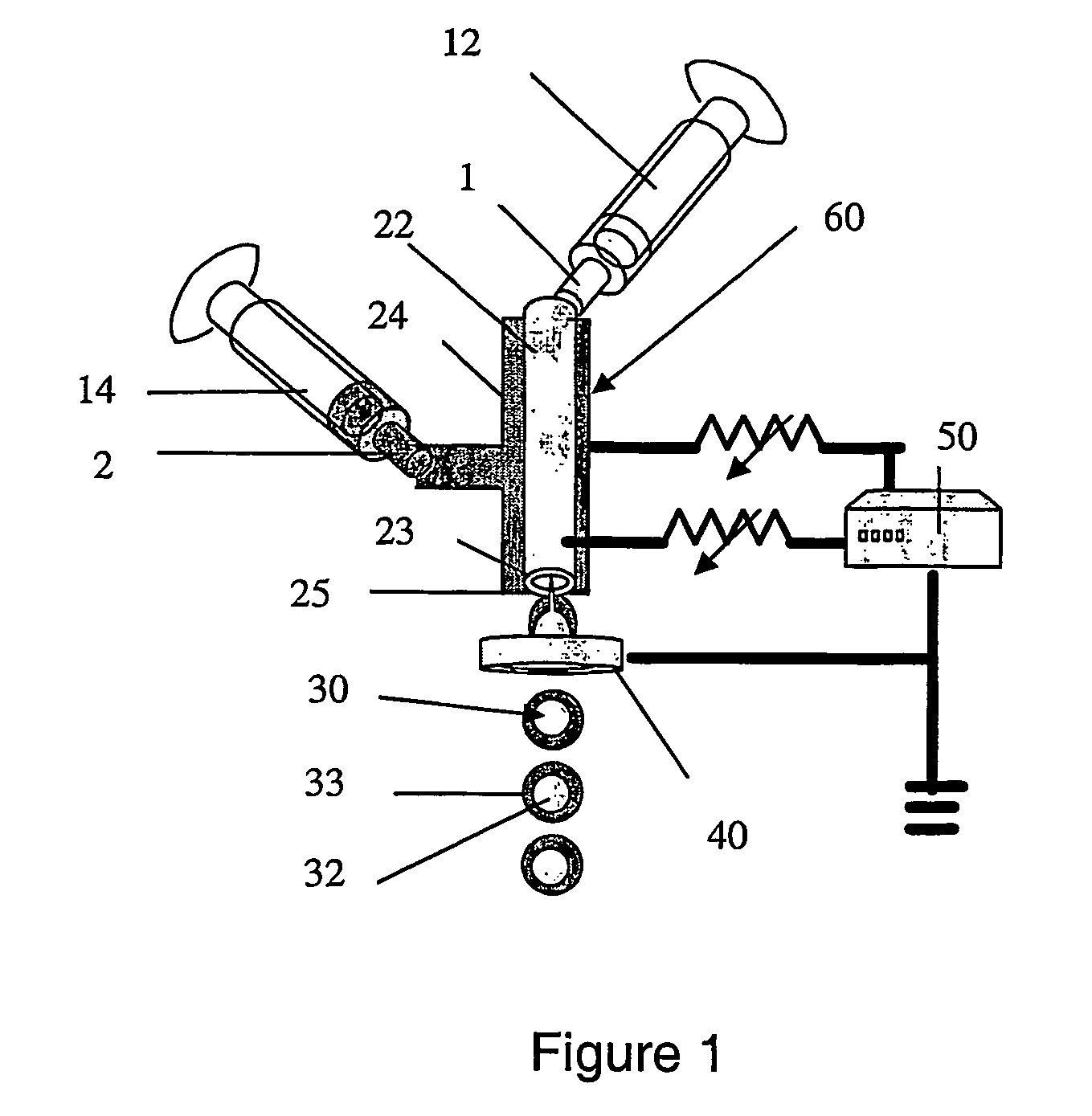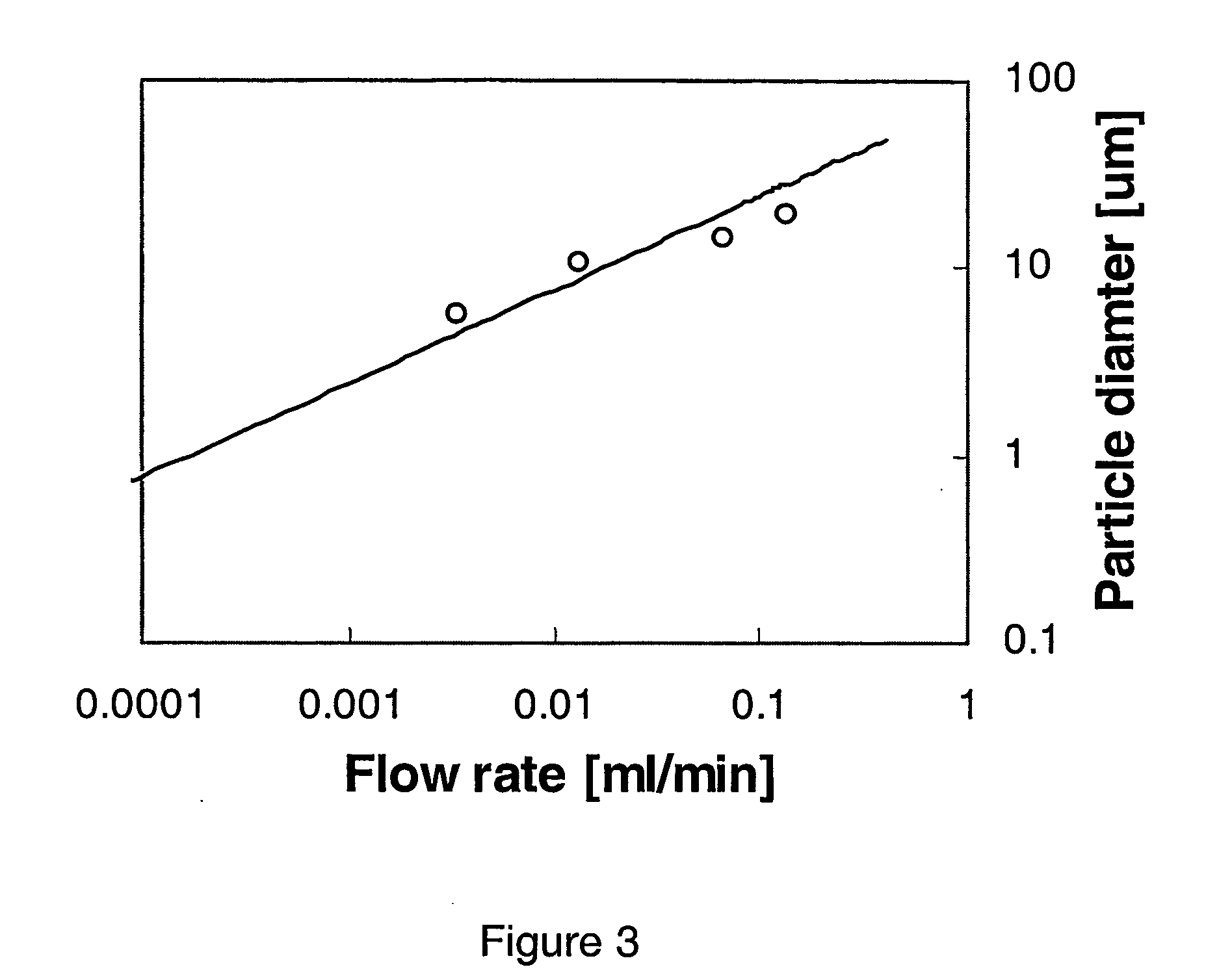Methods and apparatus using electrostatic atomization to form liquid vesicles
a technology of electrostatic atomization and liquid droplets, which is applied in the field of encapsulation, can solve the problems of ineffective encapsulation of drugs within the lipid bilayer, difficulty in separation of unencapsulated drugs from loaded liposomes, and substantial loss of both drug and lipid, so as to achieve maximum serum stability and transfection activity, and uniform physicochemical properties. , the effect of high transfection efficiency
- Summary
- Abstract
- Description
- Claims
- Application Information
AI Technical Summary
Benefits of technology
Problems solved by technology
Method used
Image
Examples
example 1
Formation of Aqueous Droplets Encapsulated by a Lipid Bilaver
[0079] Methylene blue (saturated) dissolved in water was flowed through the inner flow channel and egg phosphatidylcholine (0.62 mg / ml) dissolved in ethanol was flowed through the outer channel of an electrostatic atomization apparatus. The inner flow channel was an inner quartz capillary with an inner diameter of about 0.25 mm and an outer diameter of about 0.321 mm. The outer flow channel was a stainless capillary with an inner diameter of approximately 0.564 mm and an outer diameter of approximately 1.069 mm. The inner and outer flow channel were substantially coaxial. Flow rates for both solutions were about 0.3 ml / min and achieved using two syringe pumps (Harvard Apparatus, Infusion Pump, model 940). The applied voltage was approximately 5-6 kV and the orifice to ground distance was approximately 10 mm. The voltage was applied to only the inner capillary by connecting it to a metal tube.
[0080]FIG. 5 shows a water dr...
example 2
Formation of Compound Droplets with an Aqueous Core and Two Outer Fluid Lavers
[0081] Compound droplets were formed with a central region of methylene blue dissolved in water, an isopropanol layer surrounding the aqueous core, and a water layer surrounding the isopropanol layer. The electrostatic atomization apparatus was as described in Example 1, with the addition of an outermost flow channel. The outermost flow channel was of stainless steel piping with an inner diameter of approximately 2 mm and an outer diameter of approximately 3 mm.
TABLE 1Flow rate ofFlow rate ofisopropanol inwater in annularFlow rate ofannular spacespace betweenwater in innerbetween innermiddle and outertubeand middle tubetubeA0.136 mL / min0.136 mL / min0.388 mL / minB 0.51 mL / min 0.34 mL / min 0.51 mL / minC0.103 mL / min0.136 mL / min0.206 mL / min
[0082] The applied voltage difference was approximately 5-6 kV. Flow rates were as shown in Table 1.
Five Nozzle Array
PUM
| Property | Measurement | Unit |
|---|---|---|
| droplet size | aaaaa | aaaaa |
| droplet size | aaaaa | aaaaa |
| particle” sizes | aaaaa | aaaaa |
Abstract
Description
Claims
Application Information
 Login to View More
Login to View More - R&D
- Intellectual Property
- Life Sciences
- Materials
- Tech Scout
- Unparalleled Data Quality
- Higher Quality Content
- 60% Fewer Hallucinations
Browse by: Latest US Patents, China's latest patents, Technical Efficacy Thesaurus, Application Domain, Technology Topic, Popular Technical Reports.
© 2025 PatSnap. All rights reserved.Legal|Privacy policy|Modern Slavery Act Transparency Statement|Sitemap|About US| Contact US: help@patsnap.com



